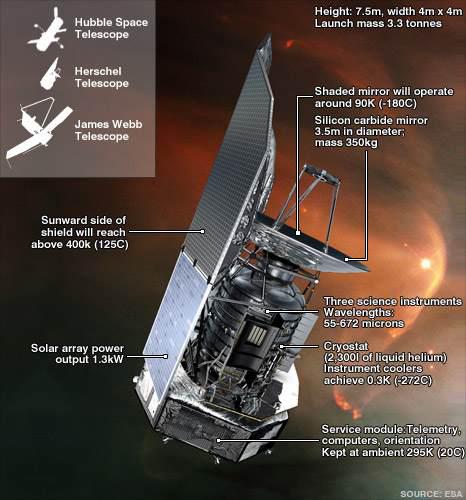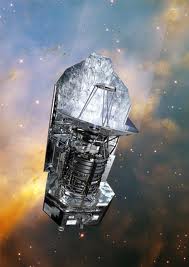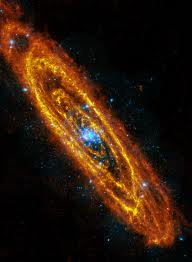

I have some unfortunate news for y’all today. ESA’s Herschel space observatory will be retiring within the next few weeks.
Herschel is an infrared telescope, home to a gigantic mirror 3.5 meters across – which makes this the largest and most powerful infrared telescope to orbit our little blue dot to date. The mission itself was launched in May of 2009 and given a mission expectancy of three and a half years.

The duration of Herschel’s mission is determined by the amount of liquid helium the telescope had on board when it was launched. In order to obtain the extremely clear, high-resolution, images – as well as observing previously invisible and cooler regions of the galaxy and universe – scientists and engineers were hoping for, the instruments onboard Herschel need to be cooled to a chilly -271°C; near absolute zero. As you’ve probably already concluded, the onboard supply of liquid helium is responsible for cooling the telescope. Of course, thermodynamics gets in our way, so this supply of helium has slowly been evaporating.
This is what brings us to present day Herschel’s predicament. Originally, Herschel had a storage tank containing 2300 liters of liquid helium; now, engineers at the ESA believe this supply is nearly exhausted. They don’t know exactly when the helium will completely deplete, but the ESA believes this will happen over upcoming weeks. Scientists will know when the tank hits empty because they will see a sharp temperature increase of several degrees of Herschel’s instruments within the first few hours.

Herschel’s mission has been an incredible success. By the time Herschel’s mission officially ends, the telescope will have performed approximately 22,000 hours of observations; all together, about 10% more than the original mission specifications. Herschel has shown us the processes of star formation be peering into stellar nurseries, allowed us to see how galaxies formed and evolved in the early universe, pulled back the vale on the chemical composition of the atmospheres and surfaces found within our own solar system (including planets, moons, and comets), looked at the chemical composition of the entire universe, resolve the infrared cosmic background radiation, and allowed us to make observations into the far-infrared spectrum helping us to see into the submillimeter wavelengths.
Because of the predictably limited lifespan of the telescope, scientists carefully planned Herschel’s missions enabling it to take all of the high-priority observations that required the clearest imaging first. Even though Herschel’s main missions are complete, scientists plan to use every last drop of helium by making more observations of celestial objects. That being said, scientists are preparing Herschel for its decommissioning. Sometime in early May, the ESA will command Herschel to enter into a long-term parking orbit around the Sun.
Herschel may be retiring, but scientists are only getting started on the data. As Goran Pilbratt, one of Herschel’s Project Scientists, says, “the peak of scientific productivity is still ahead of us, and the task now is to make the treasure trove of Herschel data as valuable as possible for now and for the future.”
That is something we can all look forward to.
Curiosity as to what Herschel has been up to since it’s launch? Find out here.